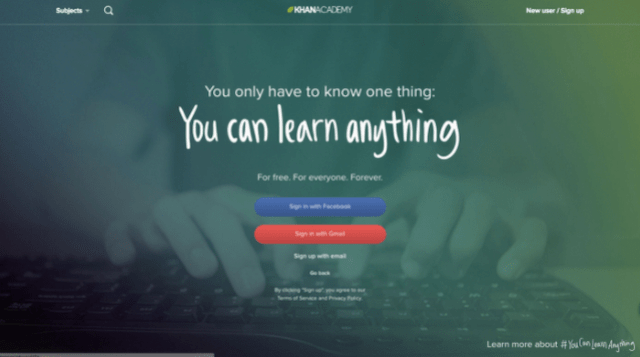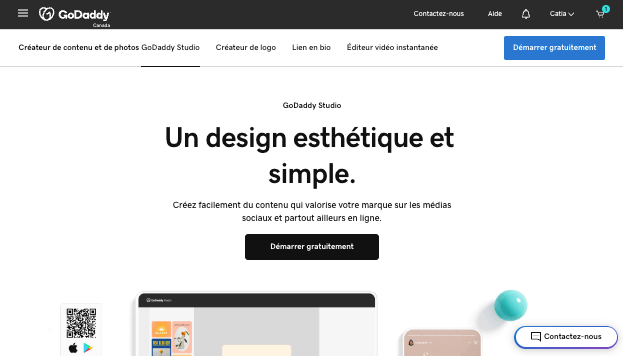Recent pandemic pressures have pushed many small businesses to the brink, with 70% taking on debt in the last two years. While we look forward to a slow return to normalcy, supported by government financial assistance, there’s one thing every sales team can do to recover: convert more leads to paying customers.
A lead is a person or business that is interested in what you sell.
In practice, this means more than just getting potential buyers to your website — you’ll need to:
- Engage with leads
- Overcome any hesitancy they may have
- Close the sale
Not sure how to convert leads and boost revenue? Here are 11 easy tweaks you can make today to boost your bottom line.
1) Design with the customer in mind
If you want to convert leads into buyers, you need to design your website and social media profiles with them in mind.
This means creating digital content that makes it clear to prospective customers exactly what you offer.
With users spending an average of just under five seconds looking at your site’s written and visual content before making the decision to stay or go, you don’t have much time to make a first impression.
Editor’s note: If you have a small business but no business website, now is the time to get one. Build it yourself with GoDaddy’s easy website builder (truly no tech skills needed!) or let the pros at GoDaddy build it for you.
2) Cut down complexity
Customizable web design now makes it possible to add videos, images, audio and text to your website — if you want, you can fill every space with something to see.
In practice, however, this isn’t a great idea.
The more you put on your page, the more your leads must split their attention and the lower the chances they’ll click through to product or service pages.

Source
3) Offer something of value
It’s also worth offering your visitors something of value when they arrive. This might be an informative article about how your product works, what it does and how it has helped other customers.
Here’s why:
While some leads arrive at your site ready to make a purchase, most are simply curious — meaning you have to overcome common barriers to conversion such as hesitancy around price, performance and quality.

The more information you provide up-front, the better.
4) Provide an actionable endpoint
Bottom line? Most leads won’t convert on their first visit to your site. But they may be willing to leave their contact information for further details about your products or notices about sales or specials.
It’s critical to include an actionable endpoint for all users.
This might be a newsletter or sales offer signup, or link to follow your brand on social media.
5) Make sure your sales team follows up ASAP
Speaking of following, you need to follow-up with any leads that leave their contact information ASAP.
The longer you wait to connect, the greater the chances your leads will forget about you and go somewhere else.
Here, website builders that notify you whenever customers provide their contact information and automatically start sending emails are a great way to ensure you don’t leave leads behind.
6) Develop a target market
The right focus makes all the difference in how well you convert leads into customers.
Let’s say you’re a car accessories company.

It doesn’t make sense to target everyone online, since some don’t own vehicles or have no interest in auto accessories.
To help boost conversion, define a target market based on the data provided by consumers on your website and social media pages.
In this case, your target market might be buyers who have disposable income and newer vehicles.
7) Do your research
While you’re improving your site and products, so are your competitors. As a result, it’s critical to conduct research on businesses in the same space.
This means:
- Googling their name
- Looking at their websites
- Checking out their social media profiles to see how people are engaging with them
If you see an opportunity — such as slow response time to user questions — this offers a potential market differentiator for your brand.
8) Take constructive criticism
Not everything you do will work out as intended. A new design or social media strategy may prompt backlash from potential customers.
While it may be tempting to defend these decisions owing to the time and effort that went into their design, you’re better served paying attention and making changes where required.
Why? Because no one wants to buy from a brand that tells them what to do or how to think. They want to engage with businesses that are respectful and willing to listen to them.
9) Highlight happy customers
One way to overcome purchase hesitancy and convert leads is by showcasing the authentic reviews of happy customers on your site and across social media.
These are especially useful if they describe specific features or functions that could help other users make their decisions.

Don’t ever pay for reviews — customers are choosier than ever about who they buy from. If they discover your reviews aren’t real, you’ve likely lost them forever.
Related: How to get more Google customer reviews
10) Apply strategic SEO
Search engine optimization (SEO) is critical to help people find your site.
Ideally, you want to select one or two high-ranking keywords related to your business and come up in the top five search results for your area when those terms are used.
For example, if your business offers window washing in Ottawa, a potential keyword to drive business would be “window washing Ottawa.”
Increasing your search ranking for this term means putting it on your site — but be careful not to “keyword stuff.” The goal is to mention the term occasionally while supporting it with details of your service, price and performance.
Too many instances of the same keywords and search engines like Google will reduce your overall rank.
11) Offer ongoing support
Last but not least on our list of lead conversion tips? Make sure your sales team offers ongoing support to customers you’ve already converted.
This means if they have an issue with your product or service you respond quickly and help find a solution.
Here’s why: If you take care of these customers, they’ll keep coming back. Since you’ve already converted them, their threshold for buying is much, much lower than a new lead.
You also get the benefit of referrals, since loyal customers will often tell their friends and family about their positive experience with your business.
Start converting leads at a higher rate
Converting leads is all about overcoming buyer hesitancy around your site, product, price and service.
The more you can engage potential customers with valuable content, encourage them to connect with your brand and provide targeted response to their questions or concerns, the better your chances of creating consistent conversion and laying the framework for loyal customers.
________________________________
Key terms defined
Let’s break down some of the key terminology used in the article above.
Leads
Leads refer to any potential customers that have an interest in your product or service. This interest can be show in multiple ways — for example, leads may visit your website, respond to your emails or reach out via social media.
Lead generation
Lead generation is the process of identifying specific customer segments that may be interested in what you’re selling. This process often involves research on customer preferences and behavior to determine the best ways to connect with leads and drive them to your website.
Conversion
Conversion happens when leads make a purchase and move from potential to actual customers. The better your conversion rate the higher your revenue, but it’s also important to ensure that converted customers remain loyal by providing solid support and service after the fact to keep them coming back.





